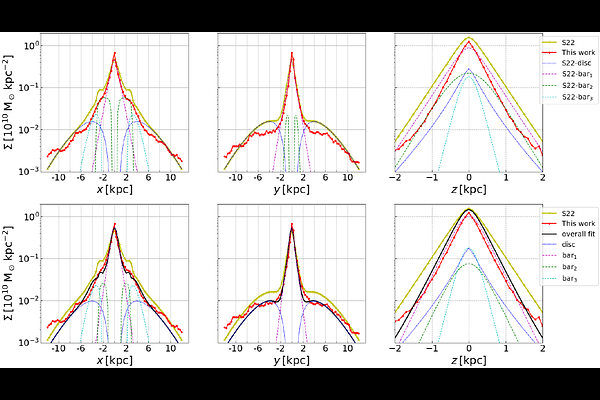Insights into the structure and kinematics of a Milky Way-like galaxy

Insights into the structure and kinematics of a Milky Way-like galaxy
Eva Durán-Camacho, Ana Duarte-Cabral
AbstractHow the large-scale kinematics of the Milky Way (MW) relate -- or even regulate -- the formation of large-to-small scale structures is incredibly hard to infer from observations. Here we investigate this interplay through a detailed analysis of a MW-like galaxy simulation, generated through the self-consistent evolution of gas, stars, and dark matter. We show that our model provides a close match to many of the MW's stellar structure and kinematic features (including in the inner Galaxy, and around the Solar neighbourhood), and find that the stellar spiral pattern in our model is very faint, with significantly less multiplicity than the sharper gaseous arms.If taken as an analogue to the MW, this finding would explain the difficulty in observational studies to agree on the number and location of our Galaxy's spiral arms. We also examine radial and tangential velocity residuals in the disc, and find that sharp kinematic transitions correlate with spiral arms, especially in the gas, where values reach $30 - 50$\,km\,s$^{-1}$. We find strong radial converging flows promoting spiral-arm growth, while diverging flows disrupt them. A time-resolved analysis of spiral-ridge segments confirms that convergence precedes density enhancements and potential star-forming conditions, while divergence leads to fragmentation and mass redistribution. These patterns evolve on relatively short timescales ($\sim10-20$\,Myr), highlighting the transient nature of spiral arms. Our model's spiral arms are dynamically driven, short-lived features shaped by evolving flows, rather than static density waves, which could explain the observed lack of contrast of cloud properties and star formation within and outside spiral arms in the MW.